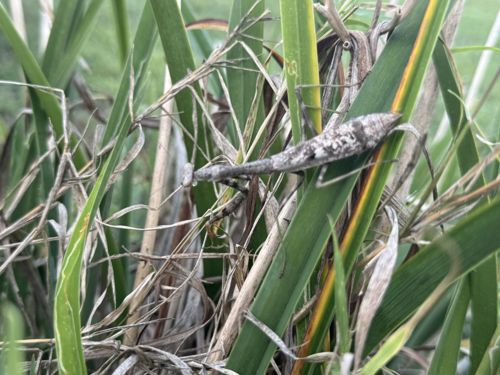Grasshopper (likely a 'pygmy grasshopper' or 'grouse locust' type based on body shape and camouflage)
Scientific Name: Tetrigidae (family likely, specific genus/species difficult to determine from image)
Order & Family: Orthoptera, Tetrigidae
Size: Typically small, ranging from 1 to 2.5 cm (0.4 to 1 inch) in length. The specimen in the image appears to be on the smaller side.

Natural Habitat
Found in various habitats, often preferring damp areas, short grass, mossy banks, wetlands, and near water bodies. Their camouflage allows them to blend in with leaf litter, bark, or reeds.
Diet & Feeding
Mainly detritivores, feeding on moss, algae, lichens, fungi, and decaying plant matter. Some may occasionally feed on small live plants.
Behavior Patterns
Known for their excellent camouflage, making them difficult to spot. They are often found on the ground or low vegetation. Unlike many grasshoppers, some species of Tetrigidae overwinter as adults. They can jump short distances and some species are capable of flight. Their body shape and coloration are highly adapted to mimic their surroundings, such as dead leaves or bark.
Risks & Benefits
Generally beneficial or neutral. They pose no risks to humans or agriculture as they do not feed on crops. They contribute to decomposition and nutrient cycling in their ecosystems by feeding on decaying organic matter. Their presence indicates a healthy micro-ecosystem.
Identified on: 10/7/2025